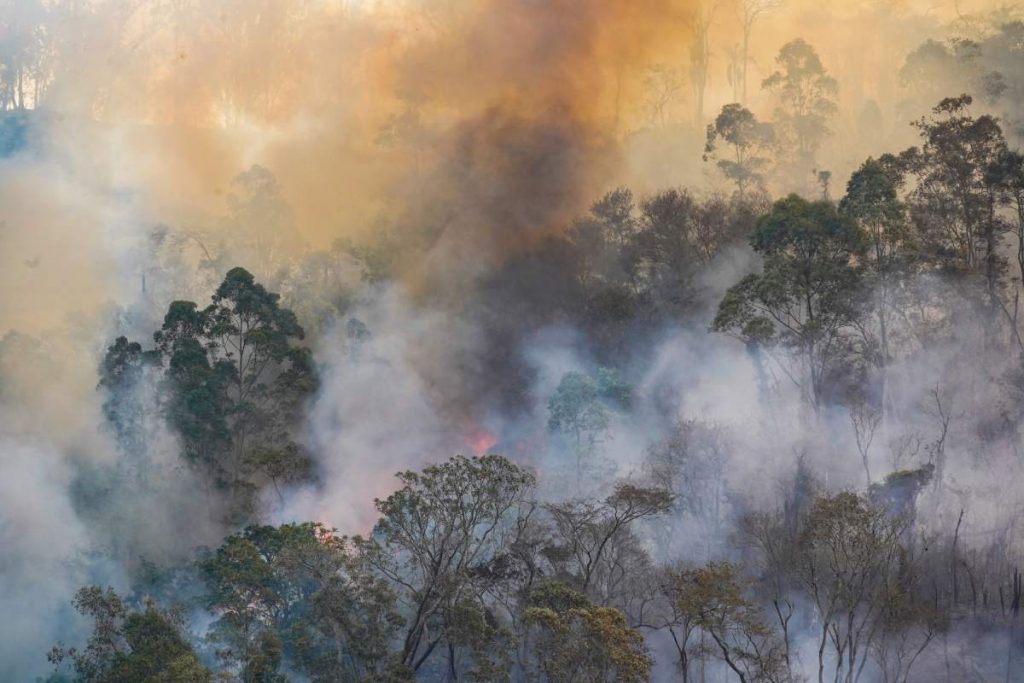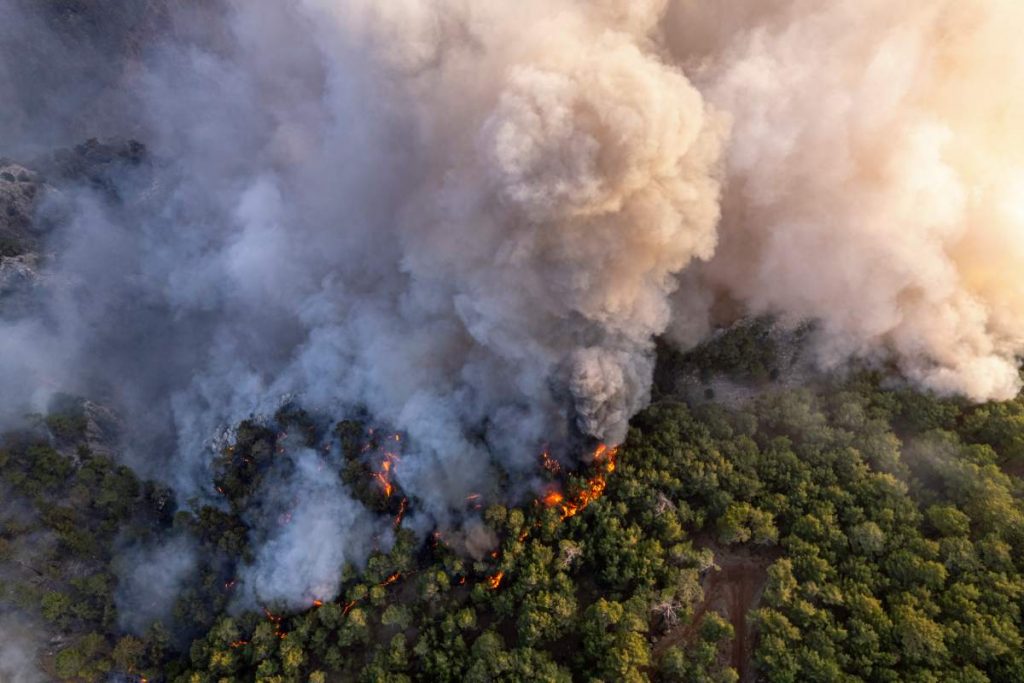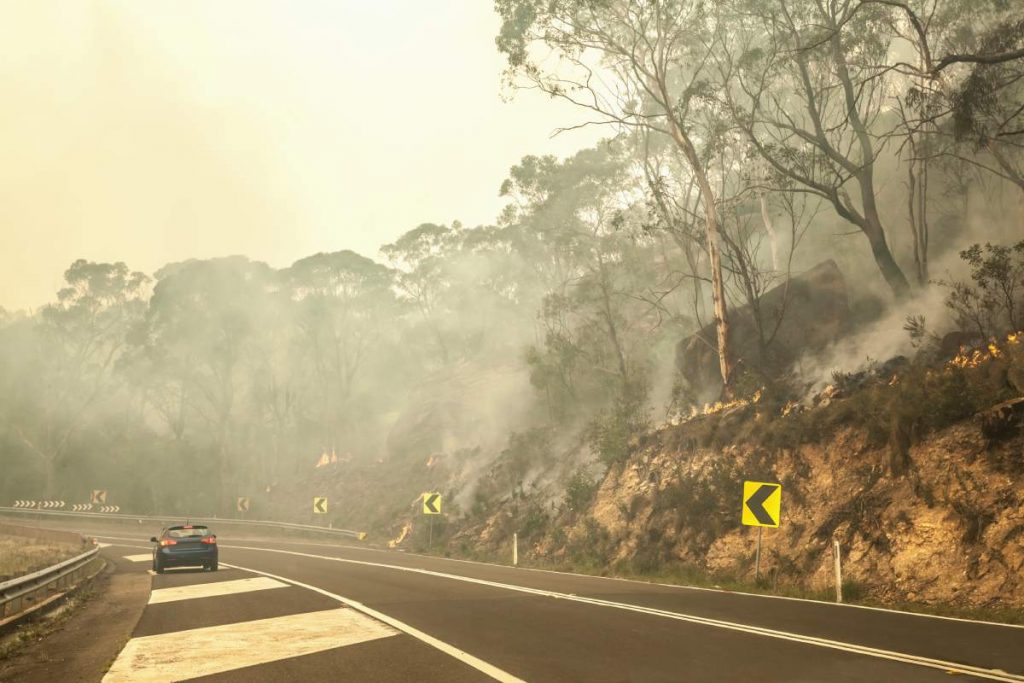Wildfires, also known as bushfires in Australia, are an annual occurrence in the country. Wildfires are a natural part of the Australian landscape, and the country is particularly prone to them due to its unique climate, vegetation, and geography.
The bushfire season typically begins in spring and summer, with the most severe fires occurring between November and February, although fires can happen at any time of year depending on local conditions. In northern Australia, the fire season starts earlier, while in southern Australia, it peaks later in the summer.
The frequency and intensity of wildfires vary from year to year, but Australia experiences some form of wildfire activity almost every year. Some years are more severe than others, especially during drought periods or during heatwaves, when vegetation is dry and more combustible.
The 2019-2020 bushfire season, often referred to as “Black Summer,” was particularly devastating, destroying large swathes of land, killing or displacing billions of animals, and causing the loss of human lives and properties.

What Causes the Australian Wildfires?
Several factors contribute to the outbreak of wildfires in Australia. These can be broadly categorized into natural causes and human activities.
Natural Causes
a) Lightning: One of the most common natural causes of wildfires in Australia is lightning strikes. In remote and inaccessible areas, dry lightning (lightning without significant rainfall) can spark a fire, especially when it hits dry vegetation or trees. This is particularly common in regions with a build-up of fuel (vegetation) after long dry periods or droughts.
b) Heatwaves and Drought: Australia experiences prolonged periods of extreme heat, especially in the summer, which can dry out vegetation and make it highly flammable. Heatwaves can cause vegetation to become brittle, turning grass, leaves, and trees into tinder for a potential fire. Drought conditions exacerbate this problem by reducing moisture in the soil and plants, making it easier for fires to spread once ignited.
c) Climate Patterns: Australia is affected by large-scale climate patterns, such as the El Niño-Southern Oscillation (ENSO) and the Indian Ocean Dipole (IOD). During El Niño years, Australia experiences drier conditions, which increases the risk of bushfires. These climate patterns can lead to a reduction in rainfall, prolonged periods of high temperatures, and low humidity, creating the perfect conditions for wildfires to ignite and spread rapidly.
Human Activities
a) Arson: Sadly, a significant number of bushfires in Australia are deliberately lit. Arson is one of the most preventable causes of wildfires, yet it remains a persistent issue. In some cases, individuals start fires either accidentally or intentionally, leading to the destruction of large areas of land. Local authorities and law enforcement are vigilant in investigating arson cases, and severe penalties are in place for those found guilty of causing bushfires.
b) Accidental Ignition: Human activities such as campfires, discarded cigarette butts, agricultural burning, or the use of heavy machinery can accidentally ignite bushfires. Agricultural practices like “slash-and-burn” can lead to fires getting out of control, especially during windy or dry conditions. Similarly, sparks from power tools or machinery can set fire to dry vegetation. Even the use of cars or motorbikes in dry grasslands can inadvertently start a fire due to hot exhaust systems or sparks from the vehicle.
c) Infrastructure Failures: Electrical faults, such as fallen power lines or equipment failures, have also been known to start bushfires in Australia. High winds can bring down power lines, and the resulting sparks can ignite surrounding dry vegetation. In some instances, ageing infrastructure has been responsible for causing fires.
d) Land Clearing: Land clearing and farming practices can increase the risk of bushfires by reducing natural firebreaks and leaving behind combustible debris. If land clearing involves burning off vegetation, this can sometimes lead to unintended fires that spread beyond the intended area, particularly in hot, dry, and windy conditions.

Where Are Wildfires Common in Australia?
Wildfires are not limited to any specific part of Australia, but some regions are more prone to bushfires than others due to their geography, vegetation, and climate. The areas most affected by bushfires include:
Eastern and Southeastern Australia
The eastern and southeastern parts of Australia, including New South Wales (NSW) and Victoria, are particularly vulnerable to wildfires. The Great Dividing Range, which runs along the eastern coast, has dense forests, grasslands, and bushland that can become highly flammable during the dry season. These areas often experience severe bushfires, particularly during periods of drought.
New South Wales: NSW is one of the most bushfire-prone regions in Australia. The Blue Mountains, a rugged region west of Sydney, is a known bushfire hotspot. During the 2019-2020 Black Summer bushfires, NSW was one of the hardest-hit states, with millions of hectares burned and many towns and communities impacted.
Victoria: Victoria has also experienced some of the most catastrophic wildfires in Australia’s history. The 2009 Black Saturday bushfires in Victoria were among the deadliest, claiming 173 lives and destroying more than 2,000 homes. The state’s densely forested areas and mountainous regions make it particularly susceptible to intense fires during dry, hot summers.
Northern Australia
In northern Australia, including parts of Queensland, the Northern Territory, and northern Western Australia, wildfires are common during the dry season, which typically runs from May to October. The fires in these areas tend to be less destructive to human infrastructure but can still cause significant environmental damage.
The grasslands and savannahs of northern Australia are particularly prone to wildfires due to their hot, dry conditions during the dry season. However, these fires often burn through grassland quickly without the same intensity as the forest fires in the south.
Southwest Western Australia
The southwestern corner of Western Australia also faces a high risk of bushfires. This region has a Mediterranean climate, with hot, dry summers that create ideal conditions for fires to spread. Towns and communities in this part of the country have experienced several major wildfires in recent decades.
Tasmania
Though less frequent than on the mainland, Tasmania has also experienced significant bushfires. The island’s unique forests, particularly its World Heritage-listed areas, can be highly vulnerable to wildfires during periods of hot, dry weather. In 2016, large portions of Tasmania’s ancient forests were destroyed by bushfires, raising concerns about the impact of climate change on the island’s ecosystem.

Impact of Climate Change on Wildfires
There is a growing body of evidence suggesting that climate change is contributing to the increased frequency and intensity of wildfires in Australia. Rising temperatures, prolonged droughts, and shifting weather patterns are creating conditions that are more conducive to the spread of wildfires. The 2019-2020 bushfire season, for example, was preceded by the hottest and driest year on record for Australia, with climate experts warning that these conditions will become more common as global temperatures rise.
The increased intensity of fires not only poses a greater risk to human life and property but also threatens Australia’s unique biodiversity. Many species of plants and animals in Australia are adapted to survive fires, but the increasing severity of wildfires is pushing some ecosystems to their limits.
Conclusion
Wildfires are an inherent part of the Australian landscape, occurring annually due to both natural and human factors. While lightning, drought, and heatwaves are natural causes, human activities such as arson, accidental ignition, and land clearing also play a significant role.
Wildfires are particularly common in eastern and southeastern Australia, as well as in northern Australia and southwestern Western Australia. As climate change continues to alter weather patterns and increase the severity of fire seasons, managing and mitigating the risks of wildfires will remain a critical challenge for Australia in the coming years.





